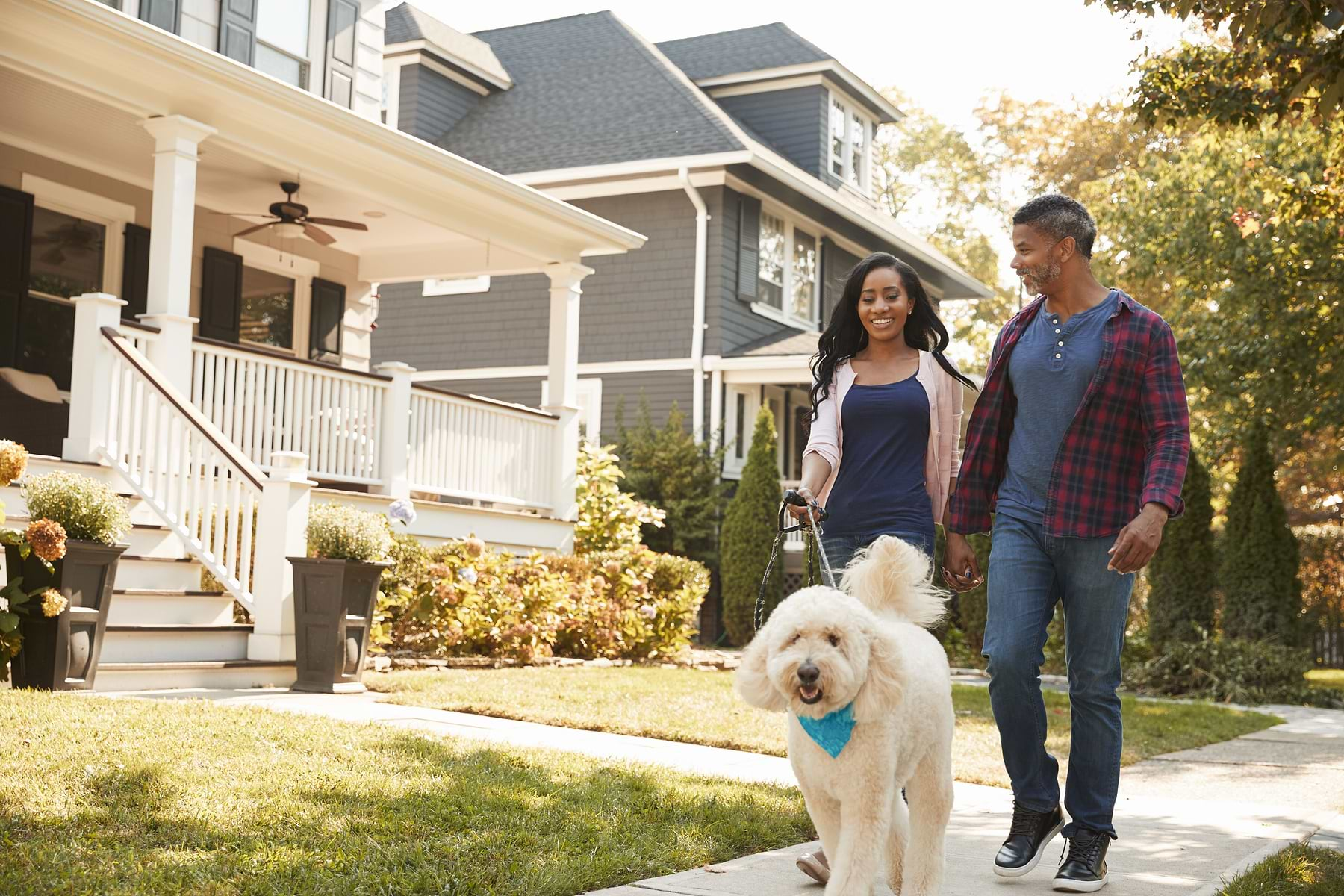Walking your dog is easy, right? You just clip on a leash and go. Ha! For many pets and pet parents, walking can be a bit more complicated than that. It’s not a skill that comes naturally to dogs, so you need to teach your pup how to walk politely on a leash. But, you might have some learning to do too! From which type of leash to choose to how to hold a leash, here are some tips for what to do at the human end of the leash.
Choose the Right Leash
There are so many different leashes on the market, so it can get confusing trying to determine which is best for your pup. Leashes are available in many different materials, from leather to nylon to rope, as well as different lengths. For most dogs, a standard flat leash with a metal clip at one end and a looped handle at the other will do the trick. Look for a material that’s easy on your hands like our Leash made from soft-touch PVC. Although you can find leashes of varying lengths, six feet is perfect for most breeds. It allows your pup ease of movement while keeping them close.
Some dogs love to chew or tug on their leash during walks, so it’s tempting to purchase a chain leash to discourage this behavior. However, the weight of the chain can be too heavy for smaller pups and it can be awkward and heavy for you. Plus, if your dog chews the chain, it can lead to injury. It’s far better to teach your dog not to chew the leash in the first place. Direct them to alternative behaviors, like focusing on you rather than the leash, and teach your pup a solid “drop it” cue.
Skip Retractable Leashes
A retractable leash is like a measuring tape. You can lock the long tape or cord into place at a given length or retract it back into a plastic case. Typical lengths run between 10 and 26 feet. Although they seem like a great way to give your furry friend some freedom, we suggest you think twice before clipping one to your dog.
Retractable leashes are designed to reward pulling. When your dog pulls, they get more leash and therefore closer to where they want to go—and that’s the total opposite of what you want your dog to learn! For polite walking skills, your pup needs to understand that a loose leash gets results, and tension in the leash gets them nowhere. Otherwise, your dog will drag you all over the neighborhood on every walk.
Another consideration with retractable leashes is the lack of control. If your dog is over 20 feet away from you, you can’t prevent them from eating garbage, running into traffic, or jumping all over a pedestrian. Of course, if you’ve trained your dog well and they are under your verbal control, there are situations where a longer leash can come in useful, like the park or beach. In these cases, a long lead (a super long standard flat leash) can provide additional freedom without the pulling complications of a retractable leash.
Hold the Leash Properly
Remember, you shouldn’t use the leash to drag your dog around. You can’t expect them not to pull you if you pull in return. The goal is a loose leash that droops in the shape of a J. However, there will be times your pup might pull or take off after an exciting distraction. If you’re not holding the leash correctly, you could end up with a sprained or broken hand.
Don’t wrap the leash around your hand or wrist. Instead, slip your thumb through the loop so the rest of the leash hangs off your thumb. Then close your hand around the loop so the leash drapes down from the bottom of your fist. If you need to take up slack, fold the leash a few times and hold the folds in that same hand, again with the rest of the leash coming out the bottom of your fist. For greater safety and control, when you start to walk, use your other hand to hold the leash closer to your dog so you have both hands on the leash. For greater stability, keep your hands at your sides instead of away from your body or above your waist.
Focus on Your Dog
Finally, when you’re walking your dog, give them your full attention rather than chatting with neighbors or scrolling through your phone. If you want your pup to walk politely and pay attention to you, you need to pay attention to them. Be proactive about avoiding distractions and show your dog it’s more rewarding to be walked by you than to take you for a walk.
Walking your furry friend requires proper behavior at both ends of the leash. We hope this helped you put your end in order. Now, you’re ready to get outside and walk your dog safely and effectively. Have fun out there!

Stephanie Gibeault
Stephanie Gibeault is a freelance writer and certified professional dog trainer with a Master of Science in animal behavior. She is passionate about combining her love of animals with her writing skills to educate and entertain. When she’s not at her keyboard, you can find her tap dancing, taking photographs, or tweeting (@GibeaultWrites).
You might also like
Crate training tips, stories and inspiration
View all blogsIn Your Diggs
Share your photos with #DiggsPet and tag us @DiggsPet on IG and TikTok.



